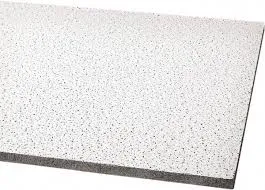8 月 . 29, 2024 05:58 Back to list
T Bar Ceiling Grid Dimensions - Comprehensive Guide
Understanding T-Bar Ceiling Grid Dimensions
T-bar ceiling grid systems are essential components used in the construction and design of suspended ceilings. They provide strong support for ceiling tiles while creating a clean and aesthetically pleasing finish. Understanding the dimensions and specifications of T-bar ceiling grids is critical for contractors, architects, and DIY enthusiasts, ensuring the successful installation of ceilings in commercial and residential spaces.
What is a T-Bar Ceiling Grid?
A T-bar ceiling grid consists of metal strips arranged in a grid pattern to support lightweight ceiling tiles. The grid system typically has two primary components main runners (or tees) and cross tees. The main runners run the length of the room, while the cross tees are situated perpendicular to the main runners to create the grid squares where ceiling tiles are installed.
Standard Dimensions
The dimensions of T-bar ceiling grids can vary, but certain standards are commonly followed. The most prevalent sizes for main runners and cross tees are 15/16 inches and 1 inch in width. The thickness of the metal used ranges from 0.017 to 0.024 inches, providing a balance between durability and lightweight properties.
The spacing between the main runners typically measures 4 feet apart, which aligns with standard ceiling tile sizes of 2 feet by 2 feet or 2 feet by 4 feet. This design allows for seamless tile installation and contributes to the overall integrity of the ceiling system. The cross tees are generally available in lengths of 2 feet, 4 feet, or even custom lengths based on the needs of the project.
t bar ceiling grid dimensions

Installation Considerations
When planning the layout of a T-bar ceiling grid, it is crucial to measure the ceiling height and the area meticulously. Proper placement of the main runners and cross tees ensures that each grid square can accommodate standard ceiling tiles. Additionally, one must consider any overhead utilities or ducts when determining the height of the grid installation.
The installation process begins with fixing the main runners to the ceiling using hangers or wires from the ceiling structure. Once the main runners are in place, cross tees are inserted to form the grid. If additional durability is required, diagonal braces may be added.
Aesthetic and Functional Benefits
Beyond their structural support, T-bar ceiling grids contribute to the acoustics and aesthetics of interior spaces. These grids allow for the integration of acoustic tiles, which can significantly reduce sound reverberation in large rooms or open office environments. Moreover, the grid system can facilitate the installation of lighting fixtures, vents, and other elements without compromising the ceiling's appearance.
Conclusion
In summary, understanding T-bar ceiling grid dimensions is crucial for anyone involved in ceiling installation. Proper knowledge of the standard widths, lengths, and spacing helps ensure a successful and professional finish that not only enhances the aesthetic appeal but also improves functionality and acoustics in a room. Whether for a commercial project or a residential renovation, correct grid installation promotes durability and ease of maintenance, making it a valuable investment in any building design.
-
Revolutionizing Interior Design with Ceilings t grid Suspended SystemNewsOct.29,2024
-
Revolutionizing Ceiling Design with ceiling access panel with Gypsum Tile WaterproofNewsOct.29,2024
-
Revolutionizing Interior Design with PVC Gypsum Ceiling: A Comprehensive GuideNewsOct.29,2024
-
Elevating Interior Design with High quality Mineral Fiber Ceiling TilesNewsOct.29,2024
-
Revolutionizing Interior Design with PVC Gypsum Ceiling: A Comprehensive GuideNewsOct.29,2024
-
Elevating Interior Design with High-Quality Mineral Fiber Ceiling Tiles: A Comprehensive GuideNewsOct.29,2024







